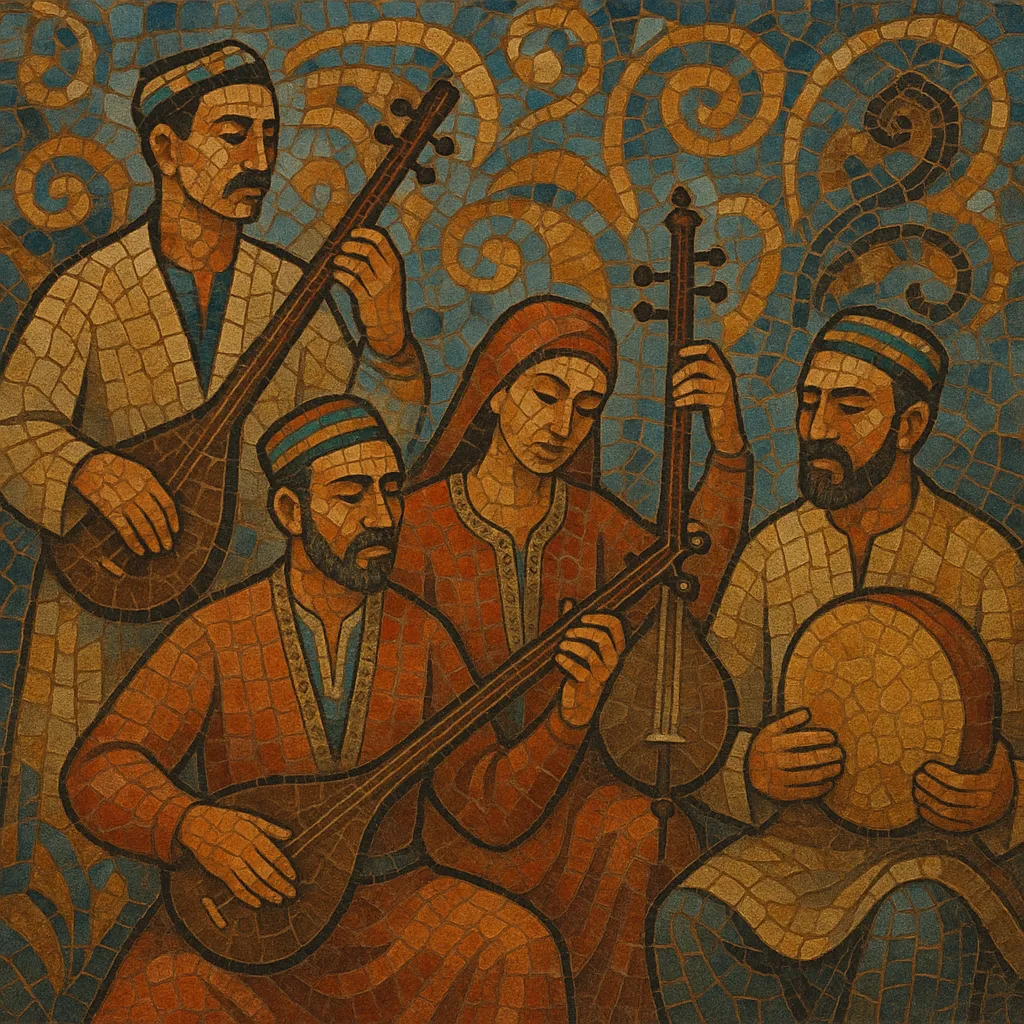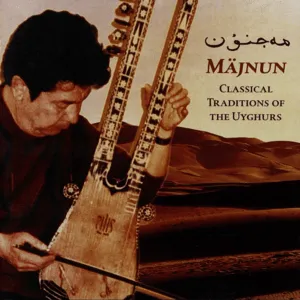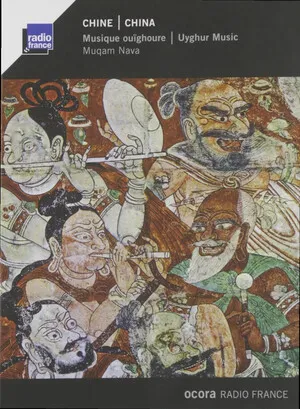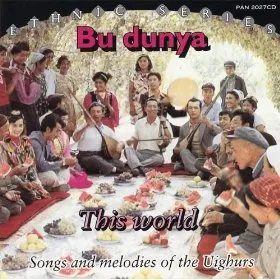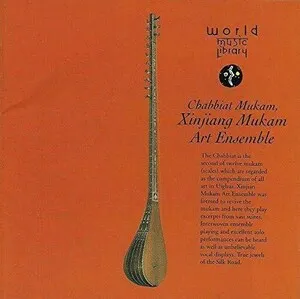The Twelve Muqam (Uyghur: On Ikki Muqam) is a monumental Uyghur suite tradition comprising twelve large modal cycles, each unfolding from free-rhythm preludes into expansive vocal, instrumental, narrative, and dance sections.
Each muqam presents a complete dramatic arc: it typically opens with free, declamatory introductions, proceeds through grand songs (chong näghmä), narrative ballads (dästän), and culminates in lively social-dance songs (mäshräp). The music moves from meditative and melismatic passages to increasingly propulsive, metrically regular sections.
The tradition is deeply modal (maqām-based), heterophonic in texture, and organized by usul (rhythmic cycles) that shift over the course of each suite. Core instruments include dutar, rawap, tambur, satar, ghijäk (spike fiddle), and dap (frame drum), supporting a highly ornamented vocal style and sophisticated melodic development.
Codified in the 16th century—most famously associated with the Yarkand court and the patronage/compilation of Amannisa Khan—the Twelve Muqam stands as a cornerstone of Uyghur musical identity and an emblematic expression of Central Asian maqām culture.
The Twelve Muqam took shape in the 1500s in the oasis towns of the Tarim Basin (present-day Xinjiang). Oral tradition credits Amannisa Khan—consort at the Yarkand court—with compiling and systematizing the twelve cycles, organizing existing repertoires of sacred, courtly, and folk materials into a coherent suite structure governed by modal and rhythmic logics.
For centuries the muqam circulated across courts, Sufi lodges, and community gatherings. Its texts often blend devotional, didactic, and romantic poetry; its performance practice balances refined court aesthetics with participatory social dance (mäshräp). The music embodies a Uyghur synthesis of broader maqām cultures (Persianate, Turkic, and Islamic) with local melodic turns, prosody, and dance rhythms.
In the mid-20th century, master singers such as Turdi Akhun and Omir Akhun became pivotal in transmitting and documenting the full cycles. Scholars and cultural institutions in Ürümqi helped to record, transcribe, and stage the muqam, fostering ensemble formats that could present complete suites in concert settings while preserving oral lineages.
Recognized by UNESCO (proclaimed 2005; inscribed 2008) as Intangible Cultural Heritage, the Twelve Muqam has since been taught in conservatories and presented by dedicated ensembles. Contemporary artists continue to perform and adapt parts of the cycles, maintaining the tradition’s modal language, poetic repertoire, and ritual-social functions while engaging modern stages and audiences.

